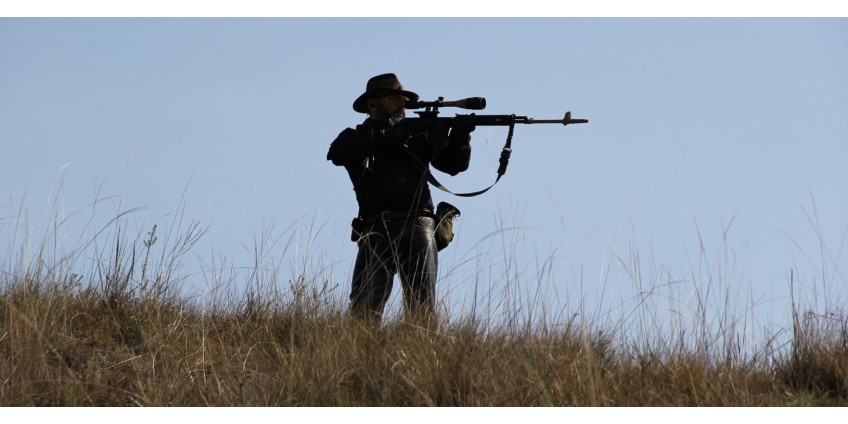
This product is not exportable outside the United States.
By adding this item to cart, you agree and acknowledge the Export Policy and confirm that you are a person in the United States with no intentions to illegally export the device.
This product is not exportable outside the United States.
By adding this item to cart, you agree and acknowledge the Export Policy and confirm that you are a person in the United States with no intentions to illegally export the device.


0

0


Our article discussed the topic "The best and most successful hunters in history. Part I." is not only too voluminous, but also too interesting to finish it just starting. The story of the best hunters in the history of humanity is intriguing and interesting; it is obvious. But, even we, starting a series of articles about them, did not understand how incredible and fascinating the story was for us. Theodore "Teddy" Roosevelt, Frederick Courtney Selous, Philip Hope Percival, Harry Selby, Ernest Hemingway, Agnes Elsie Diana Herbert - the biographies of these people, which we told about in the first part, are so shocking and fascinating that they compete with even fascinating adventure novels.
Moreover, it remains a mystery to us why producers and screenwriters in Hollywood are constantly making sequels and re-makes of the same films. All they need is to open the biography of any hunters we are talking about. They don't even have to think of anything! The stories of these heroes of their time are filled with adventures, incredible events, dangerous journeys, and deadly fights. What else do you need for a good action movie?
But while Netflix is buying back the rights to old franchises, Universal is unsuccessfully trying to build its universe with Dracula and the Mummy; Marvel is never tired of making films about Spiderman and Hulk. Batman and Super-man are trying to compete with them; the real heroes are here. We get absolute pleasure leafing through the dusty pages of their biographies and looking at the yellowed photographs of true adventurers. And today, we will continue to share these forgotten events with you.
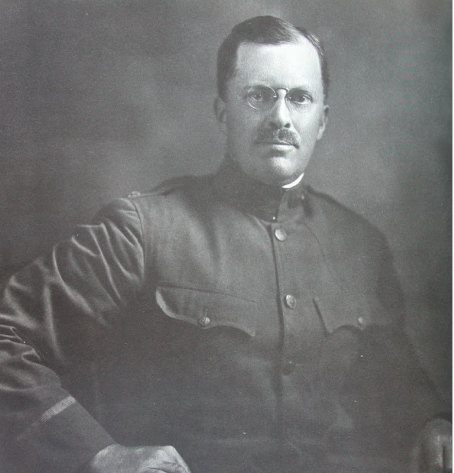
Today's list of heroes opens with Townsend Whelen, a man who disliked the explored paths and preferred to find his own. Moreover, he did this not only in a geographical sense but also metaphorical one. For example, he was unsatis-fied with the cartridges, so he created his own. Yes, .400 Whelen, .25 Whelen, .35 Whelen, and .375 Whelen are named for a reason. This .30-06 Springfield cartridge is named after its creator, our hero Colonel Townsend "Town-ie" Whelen.
The invention and improvement of hunting equipment was not the only talent of the colonel. A man of many skills and the owner of a fantastic biography, he was so diverse in life that it is difficult to classify him somehow. He made a serious career in the army, having retired from which he discovered his writing talent. Moreover, Townsend Whelen did not just write notes at an amateur level to amuse his pride.
His articles were published by severe and respected publications of the time, including Outdoor Life, Sports Afield, Field and Stream, American Rifleman, and Guns & Ammo. Also, his rich experience and adventures formed the basis of several books, mostly about weapons. The writing talent and competence in the topics that the fan wrote about were duly appreciated by the readers, and he quickly earned himself a brilliant reputation and worthy royalties.
But, the leading passion of our hero was hunting. His favorite lands were the Rocky Mountains, the Adirondacks, and all the vast territory of Canada. But, if someone asks you to describe the life of Colonel Townsend "Townie" Whelen in one fact, you can quickly complete this task. Just tell me that 66 years elapsed between the first deer killed and the last one shot by Mr. Whelen. His whole life was on the hunt!
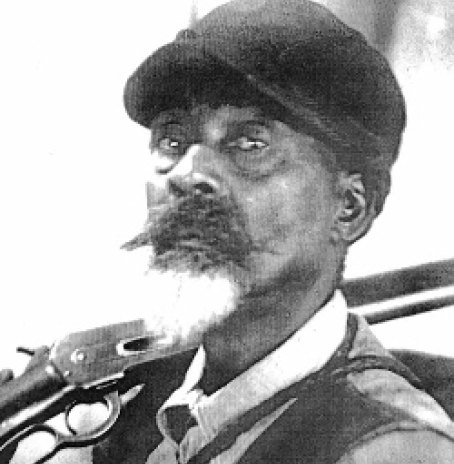
Legends are often intertwined. Their unique connection creates our life and history's incredible unpredictability and magic. The hero of this section of ours is precisely the engine of history intertwined with other legends, creating one of the world's most touching and funny stories.
However, it is worth noting that Holt Collier is a legend who deserves at least one film. Our hero was born into slav-ery in Mississippi. Since childhood, his duties included caring for a flock of hounds. After moving to Plum Ridge Plantation, the 10-year-old boy was also responsible for providing meat to all plantation workers. It should be noted that this was a challenging task, not only because of the guy's age but also because the area of Washington County, where they had to hunt, was genuinely wild. During this period, Holt is widely believed to have killed his first bear. In the future, the glory of the bear slayer will become its main distinguishing attribute and write it into history.
At the age of 14, our hero escapes from the plantation. He follows Thomas and Howell Hinds, his masters, to join them in the army... of the Confederates. It was not such a reckless idea as it seems at first glance. The fact is that the army of the southern states specially created a cavalry unit for African Americans. It was believed that by fighting for the Confederates, they had to earn freedom and land allotment after the end of the war. Holt joins the 9th Texas Cavalry Regiment, with which he finds the war's end.
Having gained combat experience, Collier realizes that a quiet life is not for him. He stays in Texas and briefly works as a cowboy. But, this job is not for a guy who went through a bloody war, hunted since childhood, and killed his first bear as a teenager. He returns to Mississippi and continues to inscribe his name on the list of America's great hunters. He does it just brilliantly.
Reckless, desperate, brave, and skillful. These epithets characterize Holt Collier not only as a person but also as a hunter. Fearlessness was perhaps his main feature. Only a person unfamiliar with fear could hunt cougars, counting on his pack of hounds, which he studied and understood from early childhood. Only a person of such qualities, in his entire life, could fight with three thousand bears and emerge victorious from them. It was his fame that intro-duced him to Theodore Roosevelt.
You know this story not only because we described it in the first part of our article "The best and most successful hunters in history. Part I.", but also because it has become the property of the world and part of its folklore. Holt Collier was the man who accompanied the President on his bear hunt. It was he who promised Mr. Roosevelt a worthy trophy. But that day, everything went wrong. And, a valuable guest could not get the desired an-imal. But, Holt wasn't the type to give up. He drove the bear and tied her to a tree. After that, the legendary President was asked to shoot the driven, exhausted animal. Teddy refused, and you all know the result of this story very well.
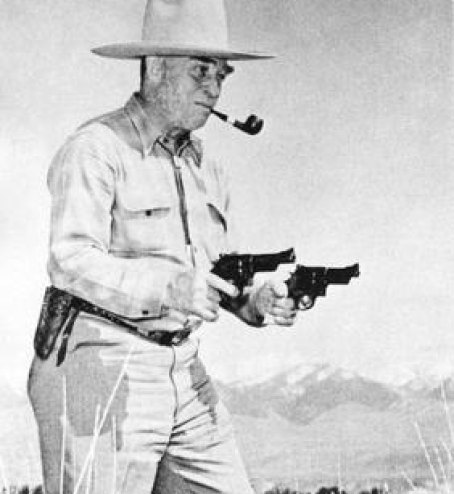
We strongly doubt that hoplophobes read our texts. You may not know these people personally, but you will imme-diately see bright representatives of this philosophy as soon as you turn on any democratic channel. Just in case, let us explain: the adherents of this philosophy not only do not accept weapons but are also afraid of them in all mani-festations.
Such people will be horrified at the mention of Elmer Keith. This man seems to have been born with a revolver in his hand. Weapons, ammunition, and hunting - were an integral part of his life and his personality. As a rancher in the vast expanse of Idaho, he lived, literally, in the middle of the wild. Under such conditions, hunting becomes not just a hobby but an element of survival. Convincing a bear not to ruin your possession of words is very difficult. The only arguments can be a gun and the ability to use it. Both Elmer had in abundance.
The area around the ranch was not the only place where our hero hunted and experimented with weapons and am-munition. Alaska, Canada (especially Alberta), Yukon, and British Columbia became his second home. Keith's ad-ventures and experiences were so vast and unique that hiding them from the community was a crime. Therefore, he regularly shared his articles and notes on the pages of the leading profile magazine Guns & Ammo. It should be not-ed that these texts remain relevant to this day.
The reason for this was the thoroughness with which Elmer Keith treated his beloved work. He became so skilled in weapons (especially pistols) that he developed his types of cartridges. His authorship belongs to the decisions that became the basis for the modern .340 Weatherby Magnum, .338-378, .338-06, Weatherby Magnum. In addition, the development of our hero became the basis for the invention of the .338 Winchester Magnum.
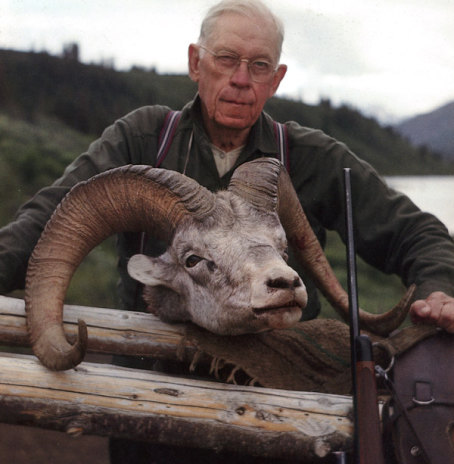
As you can see from our essays, almost all famous hunters, in combination, were good writers. Not all were talented journalists or playwrights, but their experience and unique knowledge quickly compensated for these shortcomings. But, among the galaxy of hunting stars, there were also real nuggets who succeeded in both activities. Without a doubt, John Woolf "Jack" O'Connor was such a person.
Like many of his colleagues, being a born hunter, he began by writing articles about weapons and hunting. And it must be said that in this, he achieved such great success that he soon became the editor of the respected Outdoor Life magazine. But, even having reached the pinnacle of his career as a journalist, Jack felt that he was cramped at this peak. Therefore, he wrote several books on hunting, weapons, and the arts of shooting and hunting. These books are still popular among both laymen and professional shooters.
The secret of Jack O'Connor's popularity and competence lies in his passionate devotion to his beloved work, which allowed him to gain tremendous experience not only in North America but also in Africa and Asia. Meticulousness was his hallmark, especially when it came to weapons and ammunition. The sophisticated shooter's arsenal included: .375 H&H Magnum, .416 Rigby, .450 Watts Magnum, .30-06 Springfield, .257 Roberts, and 7x57mm Mauser. And the .270 Winchester remained his primary choice until his death.
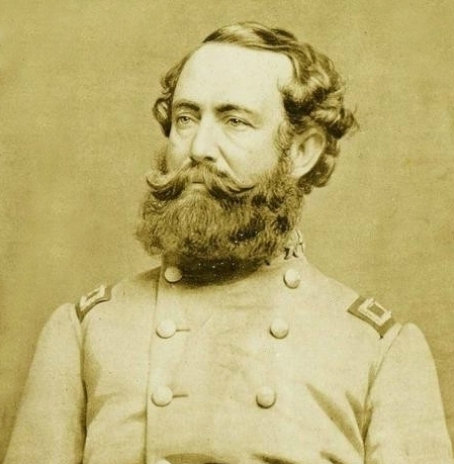
What does it take to get Theodore Roosevelt to call you "the mightiest hunter America has ever seen"? Lieutenant General Wade Hampton knows the answer to this question.
This great man was born into a wealthy family and was the heir to vast lands across the states of Mississippi and South Carolina. The well-to-do and boring life dictated by the high status of an American aristocrat did not suit the General, who craved adventure and adrenaline. Therefore, he has been obsessed with hunting since childhood.
Being an extraordinary person, he did not look for easy and ordinary ways. His favorite hunting method was horse-back riding with a pack of Southern American Foxhounds. In this way, he killed at least 400 bears, many wolves, and more than a dozen cougars.
But, his superpower, and his signature gesture, was to kill a bear with just a knife. The sight was epic. While a pack of dogs distracted the king of the forest, Wade Hampton, armed with a knife, went around the bear from behind and dealt a fatal blow. It is confirmed that he obtained at least 40 trophies in this way.
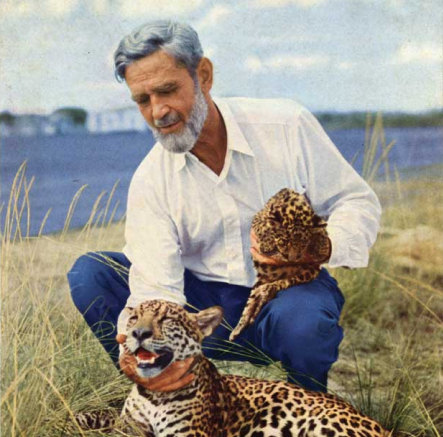
You don't have to be General Wade Hampton and receive words of recognition from President Theodore Roosevelt to feel that your life has not been in vain. This statement was vividly, unforgettably demonstrated by Alexander "Sasha" Siemel.
This ethnic Lithuanian was born in South America, in a place that did not leave a chance for a boring life in those days. With his brother Ernest, Sasha traveled across the continent, staying for a long time in Brazil and Argentina. Try to brush up on your knowledge of Brazil: one of the largest countries in the world, almost completely covered in the selva. Then, consider that Siemel lived 150 years ago. Can you imagine what kind of atmosphere reigned in these places? Surviving amid wild, wet, predatory nature and bloodthirsty bandits is already a success. But not for our he-ro.
He finds a way to make life even more dangerous and becomes a hired hunter for predators that have terrorized the local ranchers. For example, he killed his first jaguar, not with a gun or with a trap. He killed him with a spear. And to make the work look even more impressive, Alexander makes his work stylish and unique.
This episode was not isolated. Everything Sasha did was crazy and impressive. But, this does not underestimate his hunting exploits. If we talk about dangerous, fast, and agile jaguars, he killed three hundred of these predators in his entire life. Moreover, he got many of the animals with the help of a bow and a spear. Shotguns were also in his arse-nal. As well as a pack of faithful hounds who helped drive the prey. And so that you do not doubt the exclusivity of our hero, we note that he captured 22 predatory cats alive.
Charisma "Sasha" Siemel was cramped within the status of a hunter. And even writing articles and books, as many of his colleagues did, did not quench his thirst for fame. Even though he even ran a kind of Instagram in the newspapers of that time. Siemel became an actor! He took part in the series Jungle Menace in 1937. But, this role did not bring him the desired fame and did not become the start of a successful acting career. But, Alexander did not lose heart and, in 1953, released his autobiography Tigrero!, which made a splash in the media space. The effect was so power-ful that a couple of years later, it was decided to make a film about his life. And it was not a cheap project or an in-dependent movie - starring the incomparable Ava Gardner, and the legendary John Wayne played the hunter him-self. Filming was also not inexpensive; the film crew even went to the shores of the Amazon, where production was stopped. Why? Nobody ever found out.
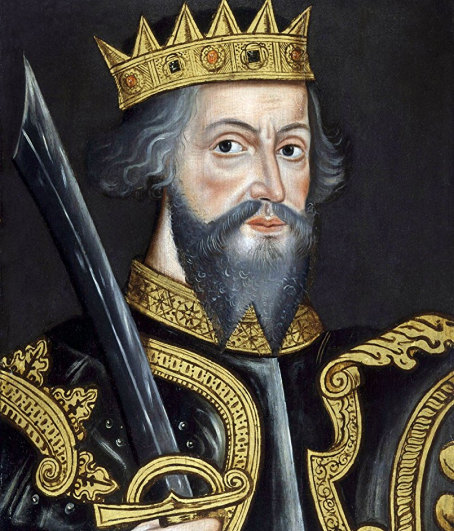
As you can see, there are practically no Europeans on our list, even though the culture and art of hunting have al-ways had a sacred and decisive significance, especially for the aristocracy. But, due to the peculiarities of urbanization and feudal aspects, as well as the relatively small territory and high population density, hunting on the continent had its specifics. The limited species of animals that live in Europe cannot be compared with the richness and diver-sity of the fauna of Africa or North America. In general terms, despite the cultural significance of this activity, it is difficult to say that it was developed in the same way as the "big game" culture.
But, this does not mean there were no great hunters in Europe. Quite the opposite. But, their vigorous activity mainly fell during the period of the Early Middle Ages and the Middle Ages. In addition, the main heroes of these processes were aristocrats of high birth. For the simple reason, that ordinary people were deprived of free access to state re-sources, including animals.
One of the brightest representatives of the great hunters of Europe was William the Conqueror. To describe how sig-nificant a role he played in the history of hunting, it is enough to mention that the results of his numerous raids are still felt in the ecology of England. He hunted almost all the animals that lived on the island. But, he had a special love for deer. Moreover, his feelings went far beyond the simple feelings of a hunter to prey. He admired them and had an inexplicable affection for these noble animals. This was so obvious that contemporaries often mentioned this fact in their chronicles. Some even said William often referred to himself as "Father of the Deer."
The hunting of that time bore little resemblance to today's adventures. The raid was accompanied by stormy feasts, had its code, and was accompanied by hundreds of servants, archers, soldiers, and related personnel. All this caused not only damage to nature but also to the state treasury.
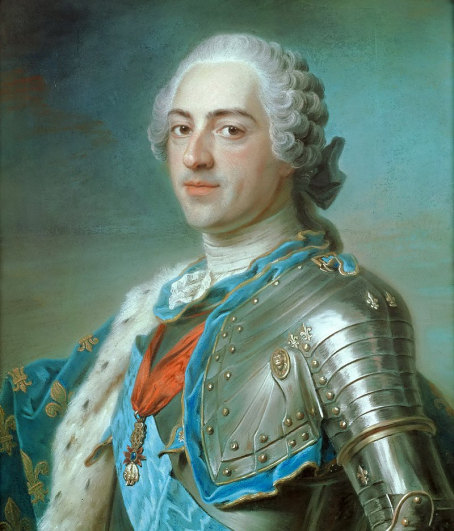
You are wrong if you think that the irresistible passion for hunting was unique to William the Conqueror. This occu-pation has always remained an obligatory attribute of all the monarchs of the continent without exception. A striking example is the king of France, Louis XV. It doesn't take long to describe his hunting exploits and how important raid-ing was to his life. Suffice it to say that he could spend 276 days a year hunting.
The scale and volume of events during the royal hunt can amaze a modern person. For example, Louis XV was very proud of his dogs, united in The Great Pack. This pack consisted of dogs of different breeds, numbering 200 individ-uals. Only with dogs, almost three thousand deer were driven and killed in twenty years.
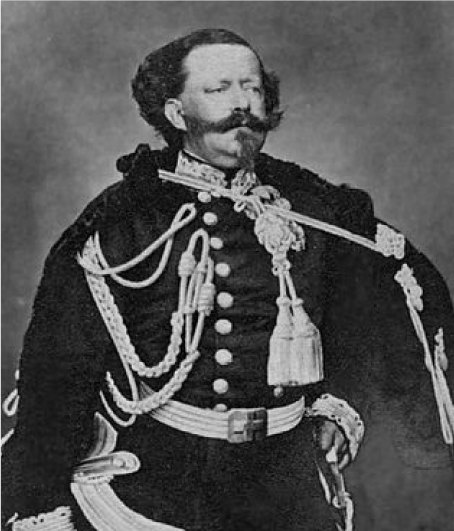
As surprising as it may sound, not all monarchs were so obsessed with their desires. There are heroes in history who thought about the future of the ecology and ecosystems of their territories. For example, this was Victor Emmanuel II ruled Sardinia and Italy. Of course, he was a great hunter and personally shot almost 250 ibex and 700 chamois in his lifetime, but he also looked to the future.
For example, he created a natural park and began developing a ranger structure. It was a decision that allowed not only to save part of the Alps but also to save the ibex population, of which there were only fifty. Thoughtful and practical actions brought results, and very soon, the number of animals was already 1000. And this is even though the hunter-king personally shot at least 50 ibex a year.
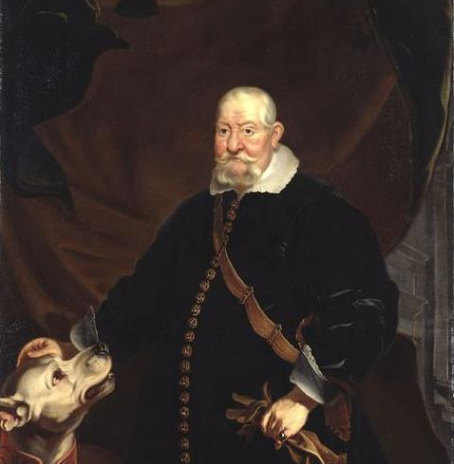
Behold! "Lord High Masters of the Chase" of the Holy Roman Empire!
If you wanted to meet the most excellent hunter of all times and peoples - here he is. And it's not a joke. Read again one of his titles at the beginning of the section passed down in the John George I family from generation to genera-tion. Often such loud and pompous titles do not mean anything but amuse a modern person rather than inspire re-spect and trust. But, this is not the case. John George I was, for sure, the most productive and productive hunter in the history of humanity. He was also a complete and hopeless psycho. This is what is inscribed in the history of hunting.
The high title of the best of the best is not given just like that. Only one red deer, this maniac, killed almost 36 thou-sand! He was so fond of deer hunting that he refused to rule Bohemia since, in this region, the deer were not large enough.
This incredible figure does not want to fit into reality. But, you will realize it faster if you remember that there were no hunting rules in those days, and our aristocratic hero hunted with a crowd of servants and assistants who kindly drove animals right to him. What is a pleasure for an average person is a big question. But, for John George I, it was a routine.
But he realized his hidden deviations differently. He arranged almost gladiatorial fights among animals brought from all over Europe. The abnormal monarch's arena became Dresden's open market, where he pushed animals of differ-ent species and watched with his guests how animals kill each other. Sometimes, the monarch himself, with friends, fought with the surviving animals. And, a special kind of entertainment was considered ... throwing foxes.
As you can see, in the seventeenth century, there were all the possibilities to organize bloody holidays, but there were no opportunities to treat the mental health of the rulers.
It is worth noting that problems with common sense were as much a family trait of the monarch as high-profile titles. His son, John George II, followed his father's path and was no less eccentric and bloodthirsty hunter. However, it did not strike the world with such vast numbers of dead animals.
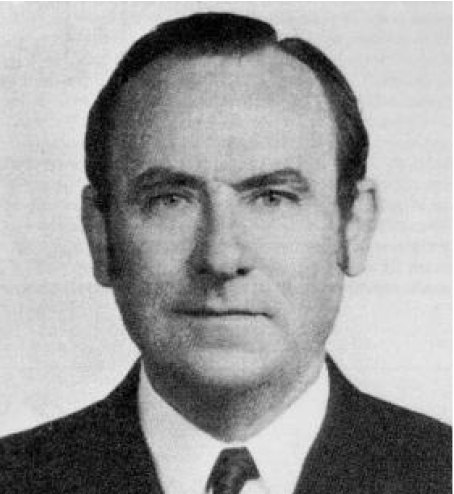
Perhaps the name Alfonso de Urquijo is not so famous among many great and successful hunters. Like all our he-roes, he lived a fascinating, adventurous life. She had everything from a successful writing career to a brilliant career in the army, in the ranks of the legendary Blue Division, during the Winter campaign.
Despite his aristocratic origin, Alfonso was not too fond of balls and dinner parties. Biology was his passion, and forests and rural areas forever remained his favorite area.
He carried his passion for hunting from birth to death. In this art, he was more interested in animals and travel than in the prey itself. Special love for de Urquijo remained in his native Spain, which he sought to explore in every de-tail. This is what wrote his name into history as a naturalist, patriot, and selfless biologist.
In later years, Alfonso de Urquijo bought the legendary villa "Nava el Sach" in Sierra Morena, which, together with the surrounding area, went down in history as a cultural and scientific center that hosted the most famous hunters of its time.
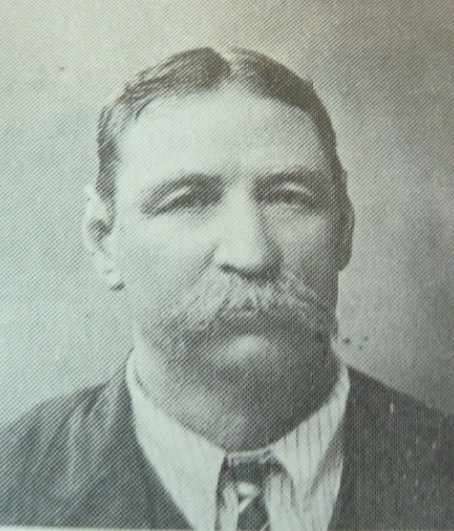
Not all of our heroes are people worthy of emulation. Of course, some of their actions correspond to the norms of the time when they lived, but, according to today's parameters, some hunters' actions look unworthy and immoral.
The story of Robert Joel "Joe" Cooper falls into this category. Born in South Australia, Robert traveled to the North, where he and his brother exterminated buffalo for several days. This was done by many hunters in Australia and the United States. It can hardly be called a hunt; the word extermination reflects what was happening at that time. More-over, not only Cooper and his brother were doing this.
The inglorious adventures of the brothers did not end there. In 1895, they arrived on Melville Island, where they ac-tively killed buffalo and clashed with the locals. Moreover, during subsequent returns to the island, Joe kidnaps sev-eral locals and takes them with him. Although conflict is not the correct definition of their activities, local genocide better describes what the brothers were doing.
In 1905, Cooper returned to the island and settled among the locals. He studies their language and continues destroy-ing the local fauna and flora. He calls himself 'The King of Melville Island. It would seem that this return is similar to some act of redemption and an attempt to correct former mistakes. But it's not. And the expulsion of Joe Cooper with accusations of cruelty to the locals in 1915 is the best proof of this.
He went down in history as an enslaver, a cruel man, and a hunter who shot animals that could not resist too much.
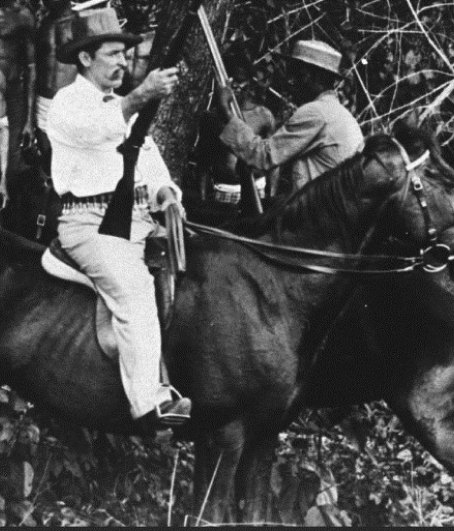
But, not everyone was as cruel to the local natives as our previous hero. For example, Patrick "Paddy" Cahill became famous as the 'Protector of Aboriginals.'
He was also a buffalo hunter and hunter (yes, at the time, it was a welcome and easy target for anyone to take). But, at the same time, his empathy and sympathy for the locals deserve respect. He did much for the natives, trying to preserve their culture and identity. This is what he went down in history, in addition to the vast number of destroyed buffaloes.
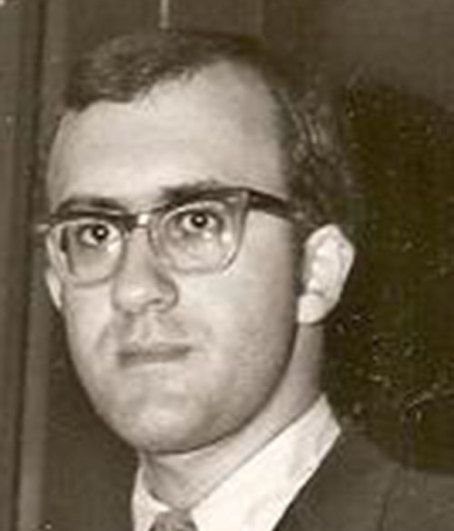
But, even among those who considered buffalo hunting their main job in those troubled times in Australia, there were exciting and extraordinary people who were real hunters. Thomas Cole, bestselling author of Hell west and crooked, was one of them.
A brave, exciting, and charismatic hunter became the prototype for many heroes in films and books.
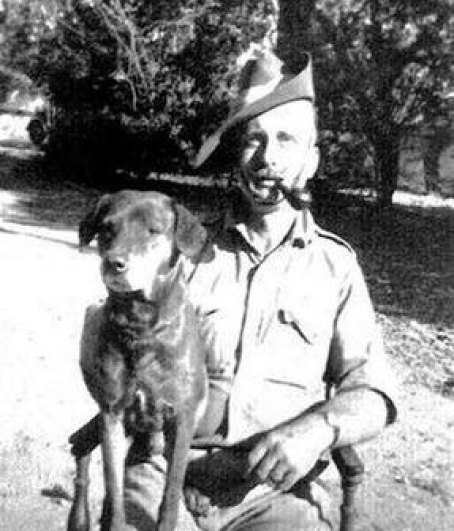
Surprising spaces for hunting opened up not only in Africa, America, and Australia. Asia has always been a danger-ous and fantastic place for hunting and adventure. Moreover, the abundance and diversity of deadly fauna made Asia perhaps the most dangerous place for a raid.
Therefore, people like Kenneth and Donald Anderson's father and son cause genuine admiration because of their biographies.
Kenneth Douglas Stuart Anderson has made history for many reasons. As the son of third-generation Scottish emi-grants, he knew the forests of Southern India very well. Moreover, he connected his life and career with these places, becoming a civil servant in Bangalore. He shot 15 tigers and leopards that hunted and killed the locals during his career. If we talk about hunting and its types, then tracking down and eliminating man-eating animals is a very noble and dangerous business. For India, with particular natural conditions and the conditions of life of ordinary people, such a collision with nature was widespread.
Ordinary people often became victims of wild animals. Kenneth Ander-son, in turn, was a specialist in tracking down and eliminating such predators that had tasted human blood.
He often did it alone, usually by setting up an ambush near the bait in the form of a goat or the victim's corpse. In addition to being dangerous, it was also highly nerve-wracking. So, it is difficult to overestimate achievements of Kenneth. He was especially considering that official statistics show only a tiny part of the bloodthirsty animals he eliminated. The hunter's weapon of choice was the double-barreled 12-bore shotgun, one barrel loaded with L.G. shot and Winchester Model 1895. You can read all this in his books and articles because he became famous as a writer.
But, the main thing that Kenneth could be proud of was his son, Donald Malcolm Stuart Anderson. He became his father's editor-in-chief and biographer, helping to describe his operations to hunt down and eliminate man-eating tigers and other animals that plagued villages.
Donald lived all his life in Bangalore and was just as obsessed with hunting as his father. Having shot his first leop-ard at 13, he devoted his life to his favorite hobby, preferring a .30-06 Springfield and a .423 Mauser rifle.
Donald Anderson is considered the last great white hunter of the colonial period.
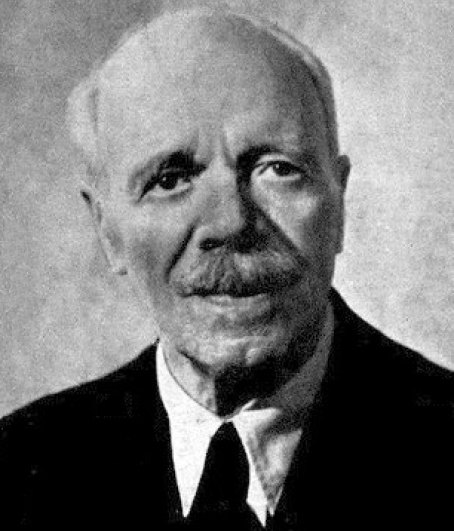
It must be said that predatory animals that killed the inhabitants of local villages have always been the curse of the subcontinent. Tigers, leopards, and other predatory cats have constantly raided the defenseless villages of India and terrified the locals, who could not resist this element of wildlife. Therefore, professional hunters, usually British, became real heroes for the local population.
One of these was Colonel Edward James "Jim" Corbett - a soldier, writer, and hunter. Born and raised in India, he was well aware of this problem, so he directed all his skills and experience to make life easier for the surrounding villages. In just 20 years, he destroyed more than twenty cats (most of which were tigers), which killed 1600 de-fenseless locals.
The Colonel wrote several books about his raids to destroy cannibals, which we recommend reading today.
Corbett preferred Rigby bolt actioned .275 Rigby, 500 Black Powder Express, W.J. Jeffery & Co .400 Jeffery Nitro Express double rifle. But, he had his hunting code and usually hunted with melee weapons, as he considered the raid to be a confrontation with a wild predator, which should be fair. He used firearms only as a last resort.
Hunters, as you can see, history knew a great many. Not all of them went down in history directly as hunters. Most of them were graphomaniacs or talented writers, but each, obeying his vanity, tried to leave written evidence of his ad-ventures.
And the adventures of these people, no doubt, are worthy of many stories. Even from the position that we, modern people, such events are so alien and surprising that they look like fiction or a movie. Each of the people we talked about and many of whom we did not have time to remember are ready-made characters for Hollywood.
Perhaps modern times have made these heroes and their occupations archaic. But, this does not mean we cannot re-read their lives with admiration and surprise.
Table of contents